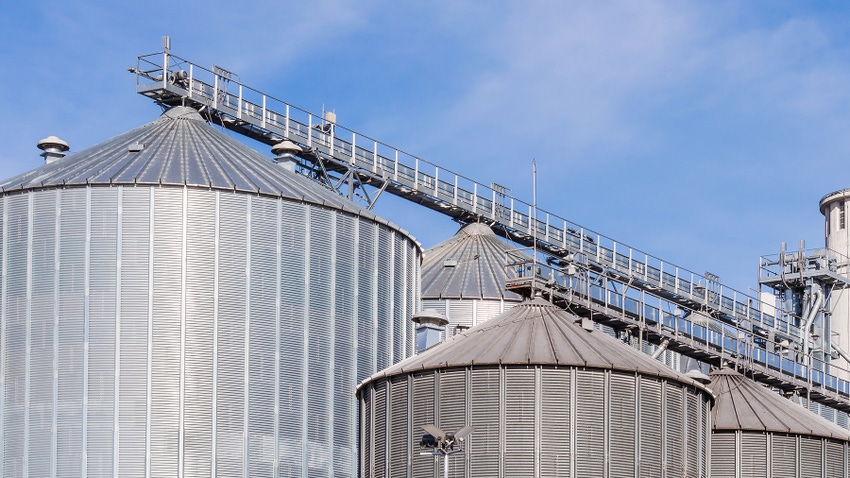
The 2023 harvest has been quite fast for some producers, while others are still dealing with wet corn and/or wet weather. A common question we’ve heard over the last few is what to do with those bushels that won’t fit in the bin at home.
Given a multitude of adjustments in how we look at this, I’d like to share my thoughts on ways to tackle those uncommitted bushels.
Consider cost of ownership
First, let’s consider some changes. This past year and even more-so the year before, our interest rates on operating notes were much lower. Given rates have doubled in many cases from 3-4% to 7-8% and higher yet, the cost of ownership of those crops we’ve harvested are as high as they’ve been in some producers’ careers.
The other obvious change to mention is the price of corn and soybeans. With bids of fall corn of $6.50+ and fall beans around $13.50 a year ago, recent local bids just above $4.50 and $12.50 are a haircut to say the least.
On the positive side, 2021 and 2022 were fantastic income years for many growers, so the need to generate cash this fall isn’t likely as robust as we typically see. To expect growers to be tight-fisted on this 2023 crop is a fair assumption.
The conversations I’ve had with grain originators make it clear that the percentage of corn sold going into harvest was most often less than 25%, which most have shared was as low or lower than normal. Having a few more beans sold and/or pricing some of the unsold beans across the scale has been a recurring theme as well.
Given that, many producers have been filling bins, waiting on better chances to price their corn, which is where we’ll place most of our efforts for this column.
Commercial storage costs
For those growers who have to haul corn to town, storage and/or dump rates are most often 25 cents or more to get out to the first of the year. Given the cost to commercially store as well as the additional cost of money, one option for the corn heading to town is to store and consider re-ownership. With March $5 at-the-money calls going for 20 cents, a person can keep ownership for less than the cost of storage. While we must remember we’ll pay storage regardless of how the market trades, we also must acknowledge basis improvements won’t help the grower who has sold their corn.
For those feeling basis will improve and/or a rally will unfold, holding on to some or all of the corn delivered to the elevator is a viable option as well. For those who have corn in storage, one might consider selling some corn options -- in essence, tempting the market to move higher. With a March $5.40 call trading at 8 cents, the producer would essentially cap out their rally at $5.48 basis March futures.
One last idea is to simply sell the corn and walk away. If the grower feels they’re profitable enough at these prices, there is no shame in selling corn, collecting at the time that works best and moving on to focus on 2024.
A combo approach to spread risk
My personal opinion on these three options is that a combination is often the best approach. While one of these options will work best this year, next year it very well could be completely different. Splitting our risk up when deciding how to market these bushels is a good way to spread out risk.

March24 Corn
Have a safe finish to your harvest! I hope 2023 has turned out well for you.
Feel free to reach out to me or anyone on the AgMarket team. We’d love to hear from you. Also, check out our winter conference that will be held February 4-5.
The risk of loss in trading futures and/or options is substantial and each investor and/or trader must consider whether this is a suitable investment. AgMarket.Net is the Farm Division of John Stewart and Associates (JSA) based out of St Joe, MO and all futures and options trades are cleared through ADMIS in Chicago IL. This material has been prepared by an agent of JSA or a third party and is, or is in the nature of, a solicitation. By accepting this communication, you agree that you are an experienced user of the futures markets, capable of making independent trading decisions, and agree that you are not, and will not, rely solely on this communication in making trading decisions. Past performance, whether actual or indicated by simulated historical tests of strategies, is not indicative of future results. Trading information and advice is based on information taken from 3rd party sources that are believed to be reliable. We do not guarantee that such information is accurate or complete and it should not be relied upon as such. Trading advice reflects our good faith judgment at a specific time and is subject to change without notice. There is no guarantee that the advice we give will result in profitable trades. The services provided by JSA may not be available in all jurisdictions. It is possible that the country in which you are a resident prohibits us from opening and maintaining an account for you.
About the Author(s)
You May Also Like






